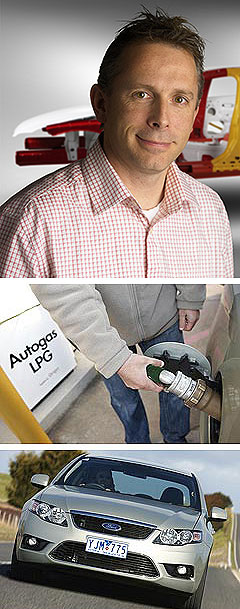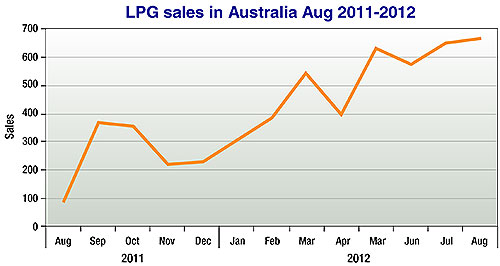News - Market Insight - Market Insight 2012Market insight: LPG car sales fight backComeback trail: LPG-equipped new vehicles like the Commodore have edged higher in showroom sales this year, but still trail traditional levels. Lower gas prices and new models help LPG cars sales recover from black 201117 Sep 2012 By IAN PORTER LPG car sales have recovered somewhat this year, thanks to the arrival in showrooms of new gas-powered models from Holden and Ford and a drop in LPG prices after a spike around the start of the year due to a colder than usual northern winter. After hitting a nadir in 2011 when depressed LPG car sales amounted to 3082 vehicles, original equipment LPG cars this year surpassed that figure in just seven months, although sales are still short of pre-GFC levels. The pick-up was slow early in 2012 as a cold snap across Europe caused a spike in LPG prices. This was exacerbated by sanctions placed on Iran, a major supplier of LPG to the world market. GM Holden energy, environment and technology executive director Richard Marshall said the price of LPG had dropped again. “Looking at the propane and butane prices, it spiked to well over $US1200 a tonne early this year,” he said. “Now it has come back down to its more usual $US600 a tonne.” Another drag on demand has been the recent introduction of an excise on LPG, the only transport fuel in which Australia is wholly self-reliant.  Left: GM Holden energy, environment and technology executive director Richard Marshall. Below: Ford Falcon EcoLPi. Left: GM Holden energy, environment and technology executive director Richard Marshall. Below: Ford Falcon EcoLPi.The excise is gradually building up to 12.5 cents a litre at the annual rate of 2.5 cents, levied on July 1 each year. However, even at the eventual top rate of 12.5 cents a litre, the excise will be well below the 38.1 cents levied on petrol. “Yes, they have introduced excise on LPG,” Mr Marshall said. “But LPG still has a big advantage. We are down 50-odd cents a litre versus petrol, which hit $1.50 in Sydney this morning,” he said at a Holden Volt pre-launch function. “So the cost advantage is still there and we are out there pushing pretty hard with fleets and so on. There is a lot of interest.” The LPG versions of the Holden and the Falcon both cost $2500 more than a regular petrol-powered model. Private buyers are eligible for a $2000 rebate out to June 2014, but business operators do not qualify. Mr Marshall said that would not deter fleets which use their cars as tools of trade (as opposed to ‘briefcase cars’ that only run to the office and back). “Any fleet doing more than 20,000km a year is getting paid back in under two years,” Mr Marshall said. “There are a lot of fleets that are doing well over 25,000km a year per car, and a lot of them are actually doing more. They’re the ones it makes sense for, and they’re the ones that are looking at it seriously. “It is tough. It’s a competitive market and there are a lot of different offerings.” While there has been a recovery in sales of new LPG vehicles in 2012, sales are unlikely to recover to pre-GFC levels because the only locally-made LPG cars are in the large-car class, which has taken a massive beating since the GFC sent people scurrying for medium and small cars. But Mr Marshall said that as LPG prices have settled down again, running an LPG-powered large car is no more expensive, in terms of fuel costs, than running a petrol-powered small car. Based on prices posted in November 2011, independent industry analyst FuelTrac estimated that it would cost $1300 in fuel costs to run a Commodore Omega for an average driver. This was $800 cheaper than the fuel cost required to drive a Toyota Corolla over the same distance, FuelTrac claimed. Vehicles use more litres of LPG to cover the same distance, but Mr Marshall said the lower purchase price meant LPG users were still well ahead at the end of the day. “The Commodore uses about 11 litres per 100km on LPG, which is not really much more than the petrol version,” he said. “So, it’s not that much more usage. People reckon you can halve your fuel costs.” The Green Vehicle Guide website shows that the Commodore Omega and Berlina use 11.8 L/100km, while the Falcon XT uses 12.3L/100km. The Falcon is more economical on the highway, while the Commodore is better around town. The FG Falcon EcoLPi was voted the best large car under $60,000 in the 2011 Best Cars Awards, which are organised by the Australian motoring clubs, NRMA, RACV, RACQ, RAA, RAC, RACT and AANT.  Read more |
Click to shareMarket Insight articlesResearch Market Insight Motor industry news |
















Facebook Twitter Instagram